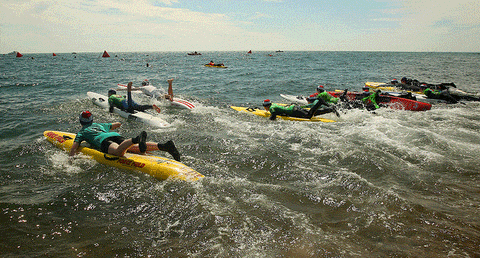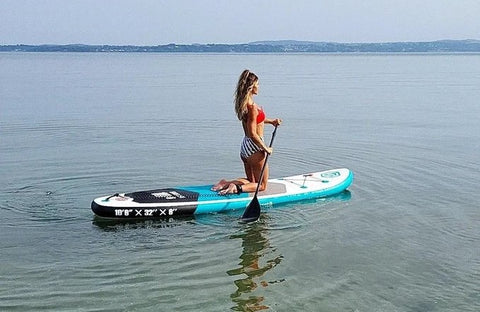How to Paddle Board Against the Current and Wind
Table of Contents
1. Tips for Paddle Board Against the Current
2. Tips for Paddle Board Against the Wind
3. Wrap Up
Sooner or later, the weather is going to turn on you and you’re going to be out on the water struggling with the wind and current. If you have you know it is not necessarily a fun experience. In fact it can be downright scary and dangerous. So you need to be prepared.
Fortunately, there are a few things that you can do to maintain control of your paddle board and either wait for the wind to die down or get back to shore. These top tips and tricks will not only help you stay safe but also make your paddling experience more fun!
Tips for Paddle Board Against the Current
Just like any body of water, currents play a big role in paddling. Currents on rivers can be extremely strong, it can push you in one direction with a force that's difficult to paddle against. Perhaps the main reason why some aren’t suitable to be paddled on. Here are three tips for paddle board against the current:

- Plan your upstream paddling
Whichever current you are paddling in, try and plan your trip so that you start by paddling against the current. That way, when you are tired you can use the current to your advantage and let it bring you back. If you want to go against a hard current at sea the thing to do is select an appropriate current. You again, want to time your effort so that you spend most of your energy at the beginning of your outing.
- Reading the river
When you find yourself paddling upstream be sure to check the nearest river gauge that will tell you the speed of the water flow in the river. The speed of the water flow will determine how much strength you need to paddle against it.
- Use the slower parts of the current
No matter what speed the gauge says a river is flowing at there will always be slower parts. For the most rivers these slower areas will be along the edges near the banks. The fastest part of the water will be in the center of the river you are paddling in. Therefore try to avoid centering yourself too much in the river as you will be battling against the strongest part of the current.

Tips for Paddle Board Against the Wind
- Lowering your center of gravity
You’ll face a lot of resistance when paddling against the wind, so if you’re standing up on your paddle board. After all, the bigger the surface area, the more the resistance. When you lower your center of gravity, you not only minimize the total windage on your board and body, but will also improve the stability and control of your paddle board. Bending your knees lower than you normally would,you will also want to drop the hand that is on the paddle shaft towards the paddle blade. If you still find yourself paddling in place, try paddling on your knees until the stronger gusts subside.

- Change the position of your feet
If your stand up paddle board has a wider nose and more rocker, it will face a lot of resistance. You can reduce the resistance by moving your feet about 4-5 inches from your normal position towards the nose of the board. This will push the nose of the board down a bit so that it offers less resistance against the wind. Conversely you will want to stand back a little further when the wind is at your back, and let the wind and waves propel you forward until you reach another location further downwind.
- Adjust your grip and shorten paddle stroke
As you’re paddling in the wind, you’ll want to first adjust where you grip your paddle, moving both hands a few inches down the length of the shaft. Doing so will naturally cause you to plant your paddle further into the water, causing you to paddle with a stronger, more powerful stroke. Meanwhile, your paddle is another source of wind resistance so you will want to shorten up your paddle strokes and speed them up so that your paddle spends less time in the wind. When you’re going against a strong wind, short, quick strokes will work better to help you get to shore faster.

Wrap Up
We all know that the weatherman won’t be accurate all of the time, but checking even a few hours before you head out should give you a pretty good idea of what to expect when you go out. Current and Wind is often unavoidable but that doesn’t mean you necessarily have to leave the paddle and board at home. Use the above tips to plan a safe SUP trip and tackle heavy wind and current effectively when necessary. Remember: always wear your PFD and your leash when paddle boarding.










